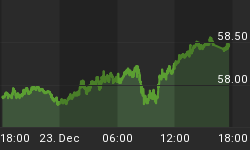The Fed's shift towards a range of 0-0.25% in its fed funds target zero intensifies the yield assault to the dollar, leaving little chance for traders but to extend speculative and directional offers in the currency. The decision prompts the biggest 2-day rally in EURUSD (4.8%) following last week's 5.1% jump. The dollar is unlikely to immediately descend into an uncontrollable decline as the easing campaigns of overseas central bankers and secular market volatility has yet to recapture its peak. But the longer term prospects ahead appear particularly ominous for the world's reserve currency once global economic stability starts to buildup and the demand/supply schedule of commodities further moves towards the price.
Why the Dollar Does not Follow its Low-Yielding Counterpart --the yen?
1. The structural imbalance situation continues to favor Japan over the US, with Japans current account surplus at 3.8% of GDP versus a deficit of 4.6% of GDP in the US. Both countries have a budget deficit, but Japans 4% of GDP is less than the US 5.5%. Japan's superior current account balance means the nations position as a major provider of global capital allows a natural return of capital back to Japan during rising economic and market uncertainty (The same rational helps explain the pounds damage as UKs fiscal deficit breaks above 4.0% of GDP in 2009 after jumping to 3.5% in 2008 from 2.7% in 2007).
In contrast, the US position as a major borrower of capital increases the riskiness of keeping money in the US despite dollars low yielding status, which served as a positive during risk aversion. In otherwords, the combination of ultra low interest rates and structural imbalances offers a worst case scenario for the US currency.
2. Elevated concerns about inflationary implications of the Treasurys swelling balance sheet to $2.25 trln increases the quantity of money, prompting a secular decline against commodities, hence, golds rebound to 2-month highs.

3. Lurking threat of Big 3s bankruptcy and its impact on overall US economy. The auto industry's overall contribution to GDP is about 4%, with 12 billion annual spent on research and development. It also employs over 240K direct workers and 5 million indirect workers, as well as provides healthcare for 2 million employees.
4. OPECs insistence to protect oil prices along with 1.9-2.1 million barrels per day rather than the expected 1.5 mln bpd. Russia's participation to cut output is expected as the need to stem the rubles sell-off will be helped by supporting oil prices. The oil-dollar impact will favor the fuel over the currency. I warned to clients yesterday that part of OPEC's decision will be impacted by the Fed's decision. Today's zero % announcement may not prevent OPEC from cutting more than 2 million bpd.
For a practical and comprehensive guide on the functioning of global structural imbalances and currencies, chapter 7 U.S. Imbalances, FX Reserve Diversification, and the U.S. Dollar of my book details the topic (pages 161-189).
With USDJPY breaching below 90 yen, 2 yen above last weeks 13-year lows and the rest of the yen crosses (EURJPY and GBPJPY) rising, the dollar impact shows emerges despite improved risk aversion. EURUSD breaches our year-end target of $1.37 and testing above a major resistance of $1.3750--the 38% retracement of the decline from the $1.6038 record high to the $1.2328 low. $1.3880 acts as the next obstacle. GBPUSD faces interim resistance at $1.55, a breach of which seen extending to as high $1.57.
AUDJPY daily chart may seen regaining the trend line resistance at 62.25 extending from Nov 25 and the bigger trend line resistance of near 62.50 extending from Oct 2007. With AUDJPY currently standing at 60.40, there is ample room for a 2 yen rebound. A 75-bp Fed cut comprises a major catalyst to empowering JPY crosses such as AUDJPY, while a 50-bp cut may also help risk appetite in the event of explicit FOMC statement asserting willingness to extend persistent liquidity to credit markets. Similar argument seen boosting AUDUSD (69.65), NZDUSD (58.30) and bearish for USDCAD (1.2010).















